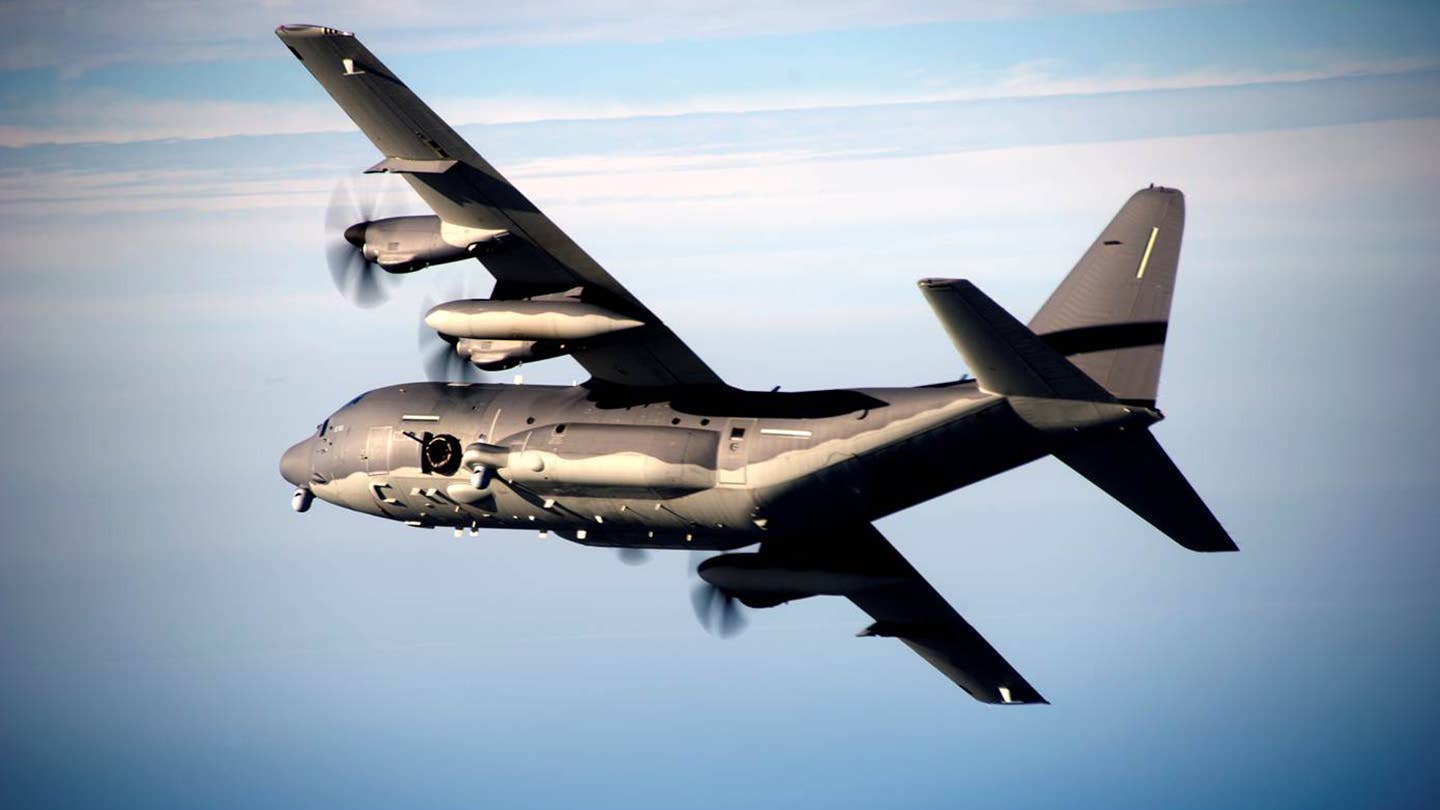Even an off-the-shelf AESA radar solution could drastically enhance the capabilities of Special Operations Command’s C-130s.

A MC-130J Commando II’s assigned to the 353rd Special Operations Group, Kadena Air Base, Japan flies over Yokota Air Base, Oct. 22, 2023, during a training mission. The 353rd SOG is an operational unit of the U.S. Air Force Special Operations Command, stationed at Kadena Air Base. (U.S. Air Force photo by Airman 1st Class Samantha White)
Then-Air Force Special Operations Command (AFSOC) commander Lt. Gen. James Slife brought up the concept again at a September 2022 Air and Space Forces Association conference. Slife is now a general, serving as Air Force Vice Chief of Staff.
“I think we’re in the terminal stages of concluding an agreement with an industry partner that will allow us to put an… AESA radar on a C-130, which provides a whole host of capabilities that we haven’t seen up to this point,” Slife told reporters during a media roundtable at the time.
AN/APG-79 AESA installed in a Hornet. (Raytheon)
An AESA radar “on a C-130 opens up a host of possibilities for everything from airborne electronic attack and airborne cyber effects and things of that nature that up to now have not been part of our portfolio,” he added.
Air Force Special Operations Command announced in May 2023 it was planning to test AESA radar on an AC-130J Ghostrider gunship. (U.S. Air Force photo by Yasuo Osakabe)
It is unclear what happened to the agreement Slife mentioned two years ago or the Ghostrider test, but AFSOC is apparently just now beginning to formally engage industry on a wide scale about its intentions of adding the sensor system that would greatly boost the capabilities of both aircraft.
AESA radar systems offer major benefits over their mechanically scanned array counterparts. These include near instant scanning speed, being able to execute multiple modes at once, the range at which they can spot targets and their overall fidelity. They are also more resistant to jamming and are far more reliable, mainly because they lack their predecessors moving parts.
A SAR image sample from a brochure for the IMSAR NSP-5 radar. IMSAR
One thing that is worth noting is that placing an AESA radar in an AC-130J’s nose, unless it was installed on a swashplate, would not allow it to scan directly to its left side, where the AC-130’s guns are installed. The radar could still help pick out fixed targets to hit with the guns, but directing the guns against moving targets via radar would not likely be possible without another side-mounted array. There are smaller modular solutions that exist for such an installation that could be tied into the larger forward-facing array.
The MC-130J could also benefit from these capabilities, for its own navigation and surveillance uses, but also to enable others in the battlespace.
AESA radars, as The War Zone has long pointed out, additionally have the secondary potential to carry out non-kinetic attacks using highly focused beams of electromagnetic energy to jam, disrupt, and even damage the electronics within aircraft, missiles, and other systems. As a result, the MC-130J and C-130J could be turned into electronic warfare platforms with relatively long-range capabilities.
That speaks to the kind of effects Slife said he would like to see the C-130 fleet carry out.
AESAs can also work as very high bandwidth, long-range communications nodes, which could also be useful in context of both the AC-130 and MC-130, which are already equipped with advanced communications systems. This capability could be leveraged for relay duties for other platforms and personnel within line-of-sight of the Hercules, especially if satellite communications are degraded or totally unavailable.
All of this speaks to making these aircraft more relevant to a high-end fight, especially one in the Pacific against China. Just an AESA alone would drastically increase the flexibility and potential roles for these aircraft after two decades of being tailored to counter-insurgency and counter-terror operations. Such enhancements could even be critical to their survival, not just on the battlefield, but when it comes to the Pentagon’s ever changing budgetary priorities.
In its market survey, AFSOC laid out a list of criteria of capabilities it is seeking in a future AESA system:
- Perform all weather functions and flight situational awareness of existing AN/APG-241 radar.
- Compatibility with existing radome (space and environmental)
- Open source interface and willingness to work with third-party integrators and software developers.
- Synthetic Aperture Radar maps and the ability to generate CAT 1 coordinates (less than six meters deviation from a target).
- Ground Moving Target Indicators.
An MC-130J with the Silent Knight Radar fitted above its nose. Sierra Nevada Corporation Sierra Nevada Corporation Sierra Nevada Corporation
We don’t know AFSOC’s timeline for acquiring AESA radar for its C-130 fleet, which is not even mentioned in SOCOM’s Fiscal Year 2024 budget proposal. It is also unclear how or if this would affect the command’s plans to add the SKR to the MC-130Js. We’ve reached out to AFSOC with numerous questions about its efforts to add AESA to its C-130 fleet and will publish those answers when they come.
Contact the author: howard@thewarzone.com




